Medieval History
- Medieval Frescoes At Bögöz Restored
One of my favourite medieval churches is at Bögöz (Mugeni, RO), in Transylvania. The north wall of this church is covered with a rich ensemble of 14th century mural paintings, which were discovered in 1898. Fur much of the last 100 years, these frescoes...
- Late 14th Century Frescoes Discovered At Nitra Cathedral
The cathedral of Nyitra (Nitra, Slovakia) is one of the oldest, most complex, and - until quite recently - least known cathedral building of medieval Hungary. Located north-east of Pozsony/Pressburg/Bratislava, the bishopric of Nyitra was founded before...
- Medieval Wall Paintings Discovered At Magyarlóna
Cover of the book on Magyarlóna The village of Magyarlóna (formerly known as Szászlóna, now Luna de Sus, Romania) is a characteristic village of the Kalotaszeg region of Transylvania, near Kolozsvár (Cluj). The village was first mentioned...
- Virtual Visits To Transylvanian Medieval Churches
Gelence (Ghelinta) A new website provides a number of very-well done virtual visits (360° panoramas) to Transylvanian sites. The site, called Treasures of Szeklerland introduces monuments and sites from the eastern part of Transylvania, the territory...
- The Medieval Parish Church Of Pest (part Ii.) - A Remarkable Discovery
This post focuses on the medieval fresco decoration of the Inner City parish church of Pest - you can read my introduction to the history of the building here. Not much survived of the original painted decoration of the Inner City parish church....
Medieval History
Restoration of the wall paintings of Torna / Tur?a nad Bodvou
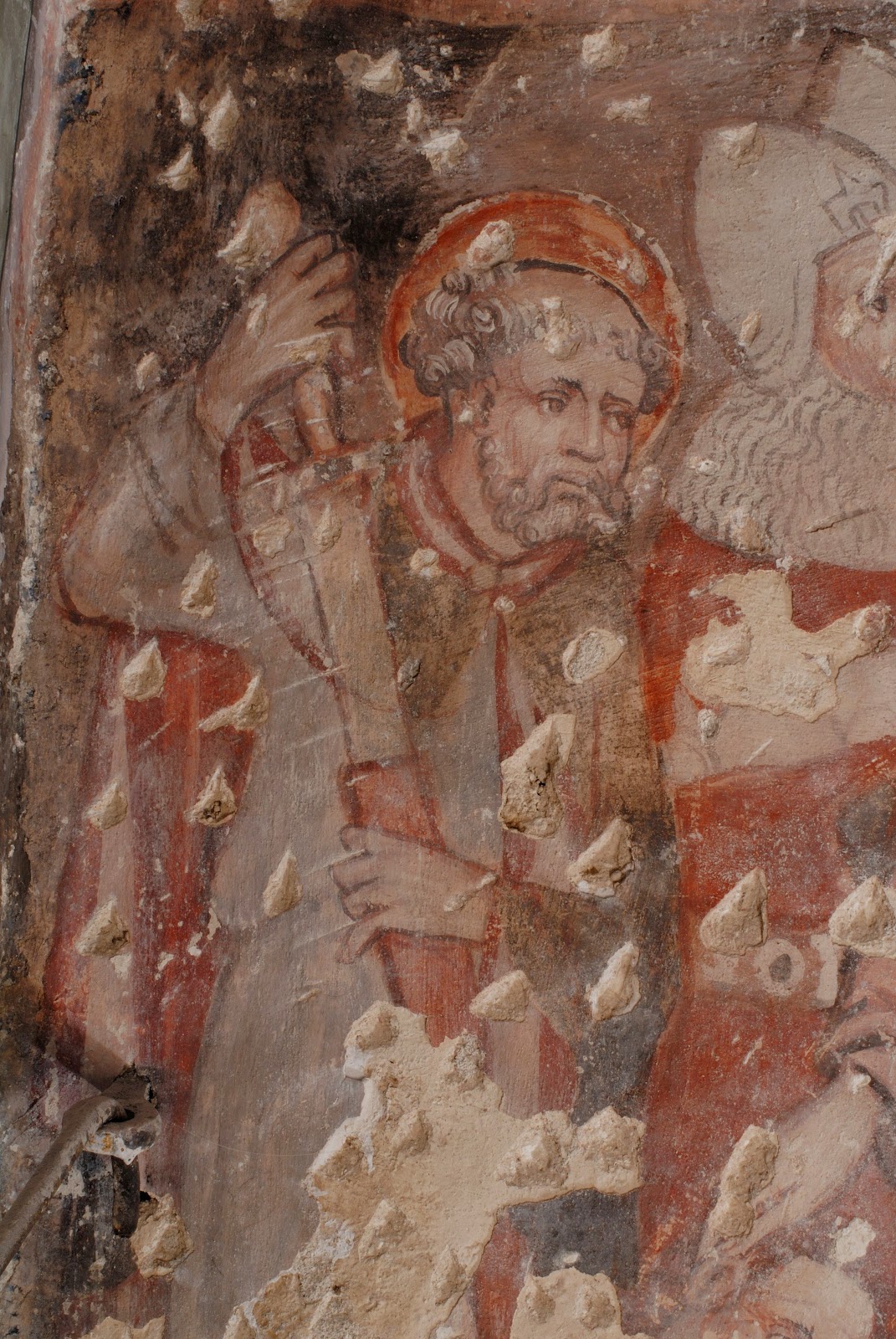 |
| Detail from the Arrest of Christ (cleaned state, 2008) |
One of the largest restoration projects in Slovakia was completed in 2014: the restoration of the wall paintings in the sanctuary of the medieval church of Torna (Tur?a nad Bodvou). The frescoes, found in 2006, were uncovered starting from 2007, and their full restoration is now completed. I contributed as an external art historical consultant to this work, and wrote a preliminary study about the wall paintings for the scholarly documentation of the frescoes. Although my study has not yet been published, I am now providing here a brief overview of the frescoes and their restoration.
Torna is a medieval village in southern Slovakia, just north of the Hungarian border, not far from the town of Kassa/Ko?ice. In 1357, the owners of the property received permission from the king to build a castle on top of the hill overlooking the village. The castle still dominates the landscape. It was the same family - the Tornai family - who had the parish church of the village built, in the second half of the 14th century. The last member of the family, János Tornai, passed away in 1406, his tombstone stands to this day in the sanctuary of the church. Although the sanctuary of church, intended as a family burial site for the Tornai family, was clearly completed before 1406, it was only decorated some time later, as I will discuss below.
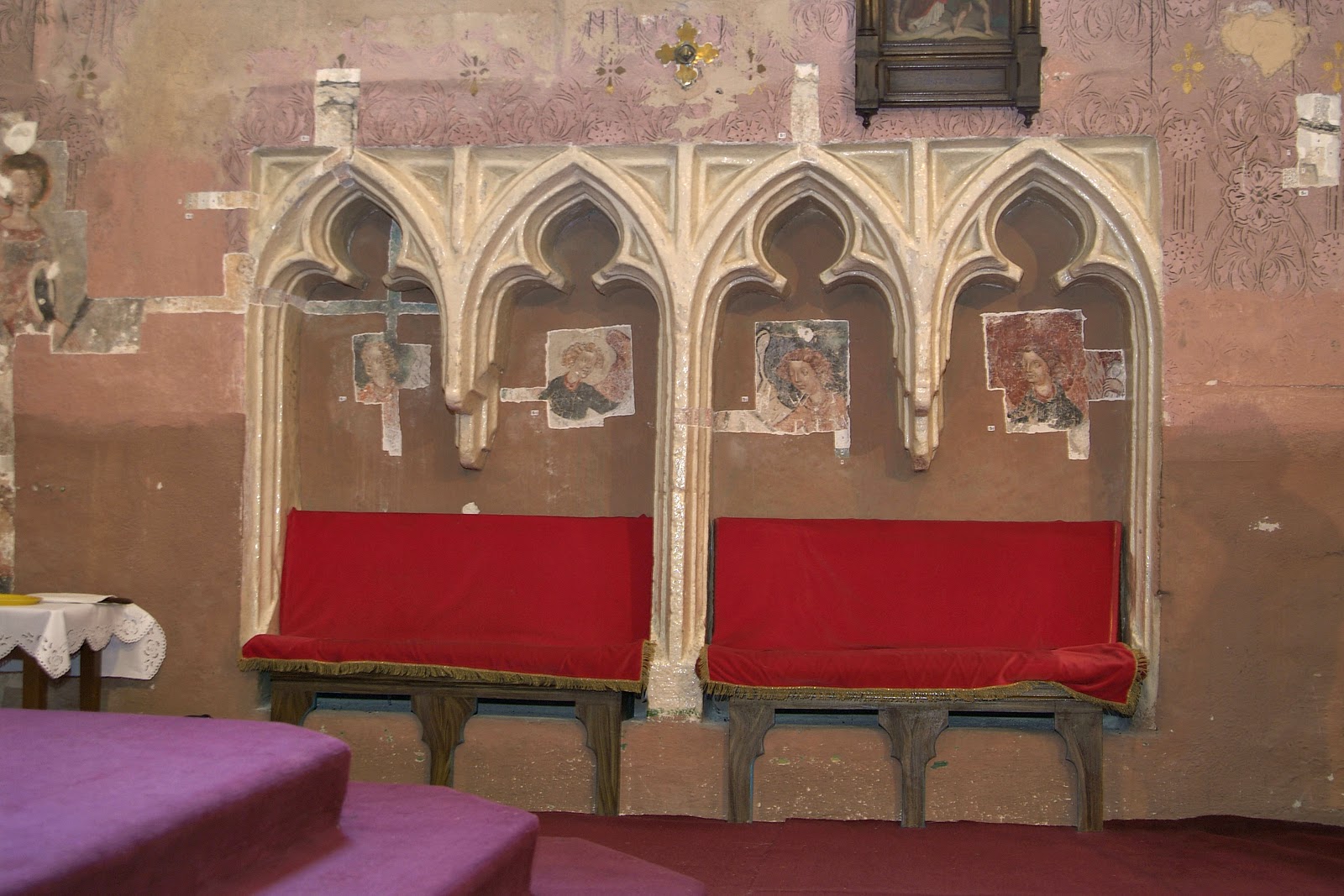 |
| First details to emerge (2006) |
Until 2006, a nondescript neo-Gothic ornamental decoration covered the walls of the sanctuary, painted to harmonize with the neo-Gothic main altar of the church. The frescoes were first found on the back wall of the Gothic sitting niches on the south wall of the sanctuary. As research and recovery progressed, it became clear that the entire sanctuary (including the vaults) was once painted according to a unified system. Although the first details to emerge from this painted cycle were very promising, unfortunately it turned out that the decoration is largely lost: large surfaces of the original painted decoration were destroyed during the centuries. The original decoration survived mainly on the eastern walls (behind the altar), on the lower zone of the wall as well as on the window splays. What was once an elaborate narrative cycle on the uninterrupted north wall of the sanctuary, however, is now lost almost without a trace.
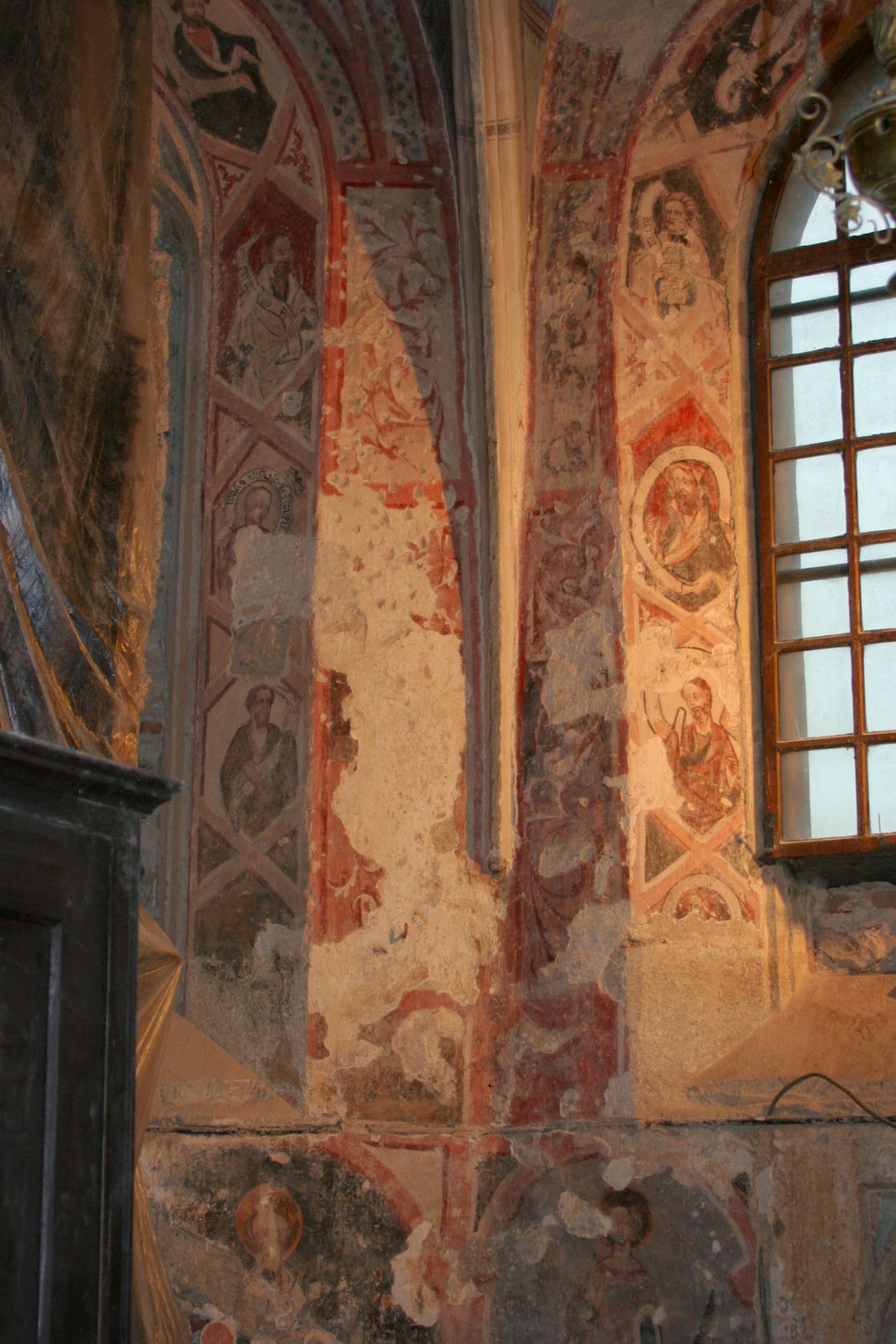 |
| Work in progress (2008) |
Still, enough remains from the painted decoration to establish its original arrangement, and surviving scenes attest to the high quality of this decoration. The most significant part of the decoration was a large, multi-zone narrative cycle, depicting the Infancy and Passion of Christ. Only a few of the scenes can be identified today, including the Nativity, and from the Passion: the scenes of Christ on the Mount of Olives and the Arrest of Christ. The scene of the Nativity belongs to the type of representation, in which Mary prays before her newborn son, who is lying on the ground. The region of Gömör county contains a large number of comparable cycles depicting the Life and Passion of Christ - for example Gecelfava/Koce?ovce or Ochtina/Ochtiná but the quality of the frescoes at Torna is much higher.
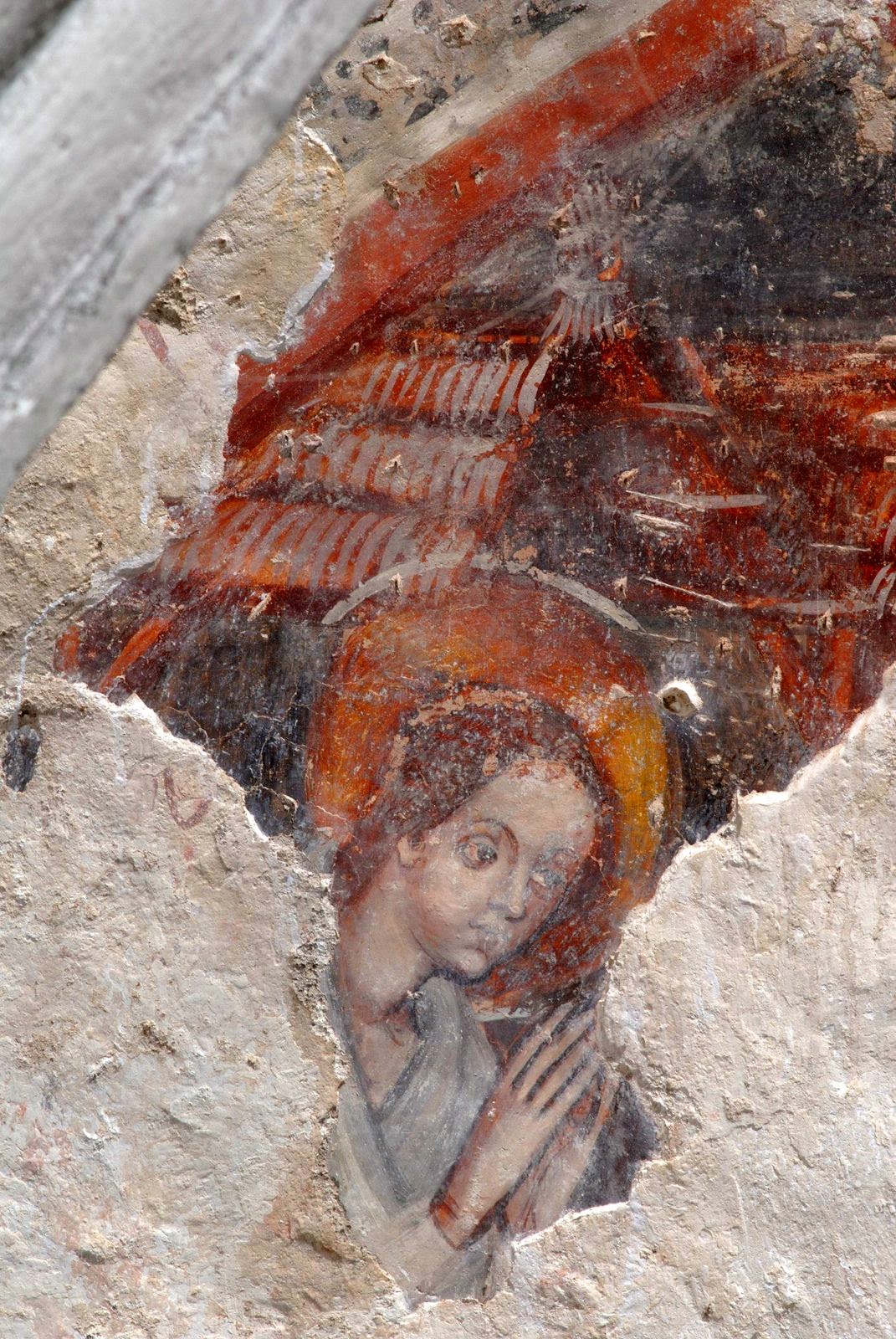 |
| Detail of the Virgin Mary from the Nativity (cleaned state, 2008) |
The lower zone of the walls was decorated with a series of female saints: we can identify among others St. Margaret with a dragon and a cross in her hand, St. Dorothy with a basket full of roses, St. Ursula with an arrow and several others. The window splays contain varied depictions of prophets, and all this was tied together with rich decorative details. The quality is very high overall, and the cycle was likely executed around 1420 by a Central European workshop familiar with the latest trends of International Gothic painting, of the same stylistic orientation as Thomas of Coloswar, painter of the Garamszentbenedek altarpiece of 1427. Comparison of several of the faces can be made with the famed Vienna Musterbuch (around 1400, Vienna, Kunsthistorisches Museum, Kunstkammer) - a likely source for the figures of Thomas of Coloswar as well. After 1409, the patron of the church was Pál Özdögei Beseny?, a high-ranking figure at the court of King Sigismund. His generosity is also documented by the magnificent chalice which entered the Hungarian National Museum from this church. We can identify him as the commissioner of the fresco decoration.
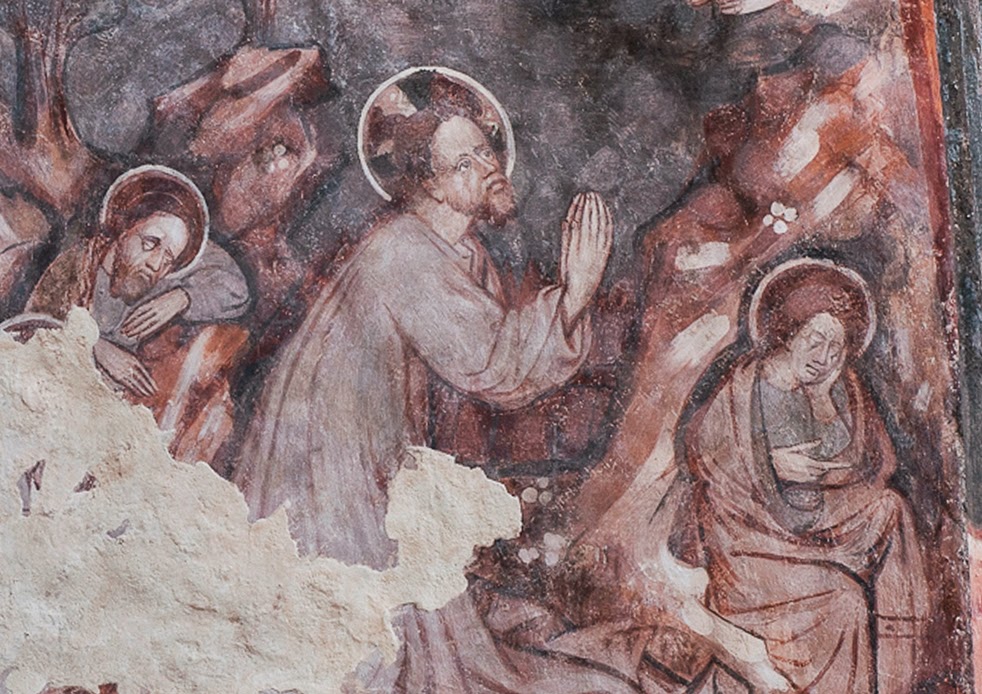 |
| Agony in the Garden (restored state, 2014, photo: Peter Gombo?) |
The extensive restoration campaign of the frescoes started with the full uncovering of the paintings, followed by their full cleaning and conservation. The windows and other architectural elements were also cleaned and - where needed - reconstructed. Finally, minor gaps in the painted surface were filled in, and a neutral new plaster was applied to all areas where the painted decoration was not preserved. The restoration was directed by Peter Gombo?, while the architectural research and planning was carried out by dr. Ján Krcho. You are advised to consult the admirable photographic documentation put together about the restoration by Peter Gombo?, chief restorer working on the site (make sure to download the PDF-file as well). You can also get a good selection of images on the apsida.sk website.
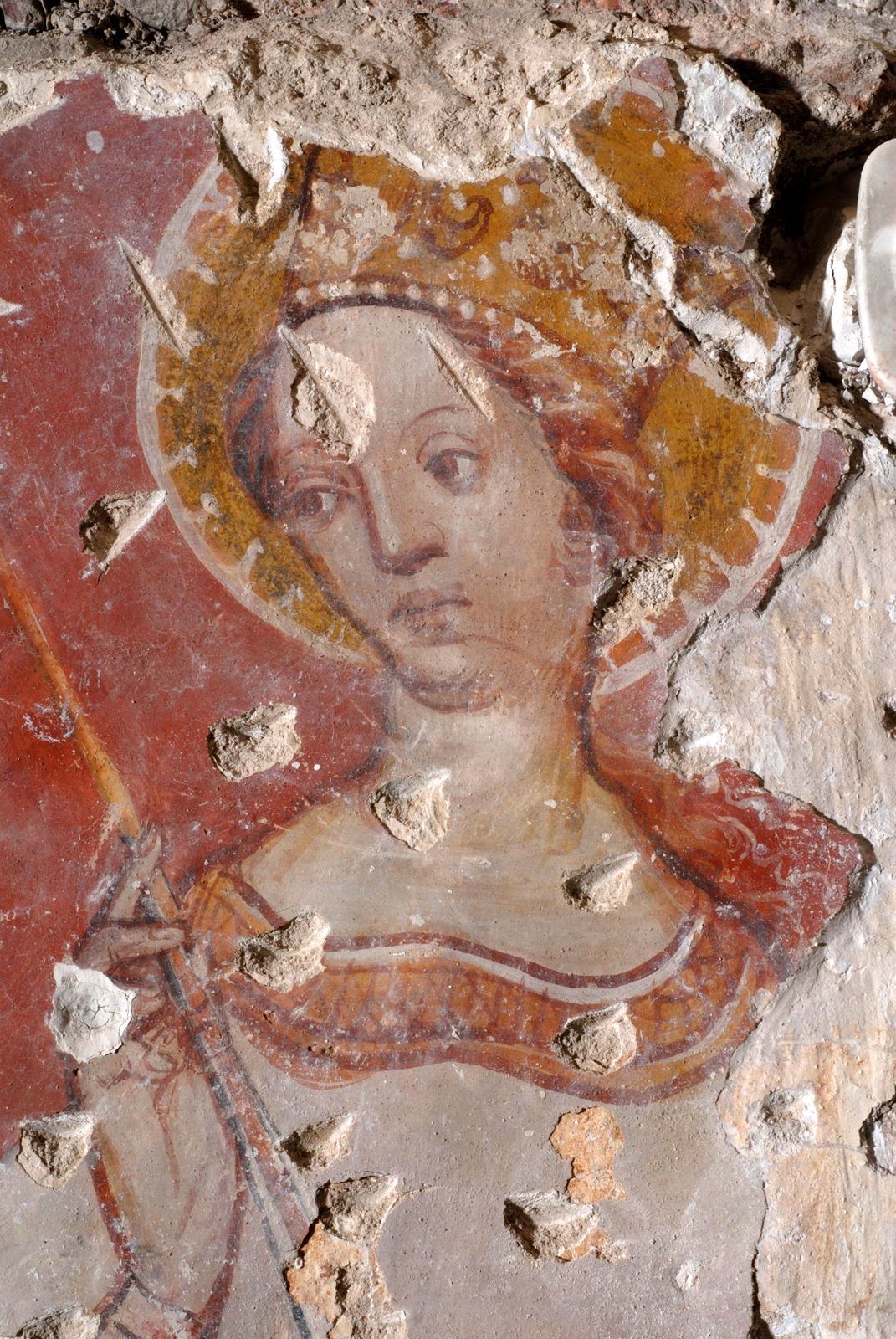 |
| Female saint from the lower zone of the wall (cleaned state, 2008) |
In conclusion, the restoration of the the wall paintings at Torna means saving on of the most important fresco cycles from the Sigismund period, which is comparable in importance to better-known monuments, such as Siklós or Almakerék (Malincrav, RO). Despite their fragmentary survival, the frescoes are prime examples of the very high quality of mural painting we can expect to find at the centers of aristocratic estates of the period. If you would like to know more about the historical context of these images, please consult my study about aristocratic patronage in Hungary at the time of King Sigismund (published in 2013).
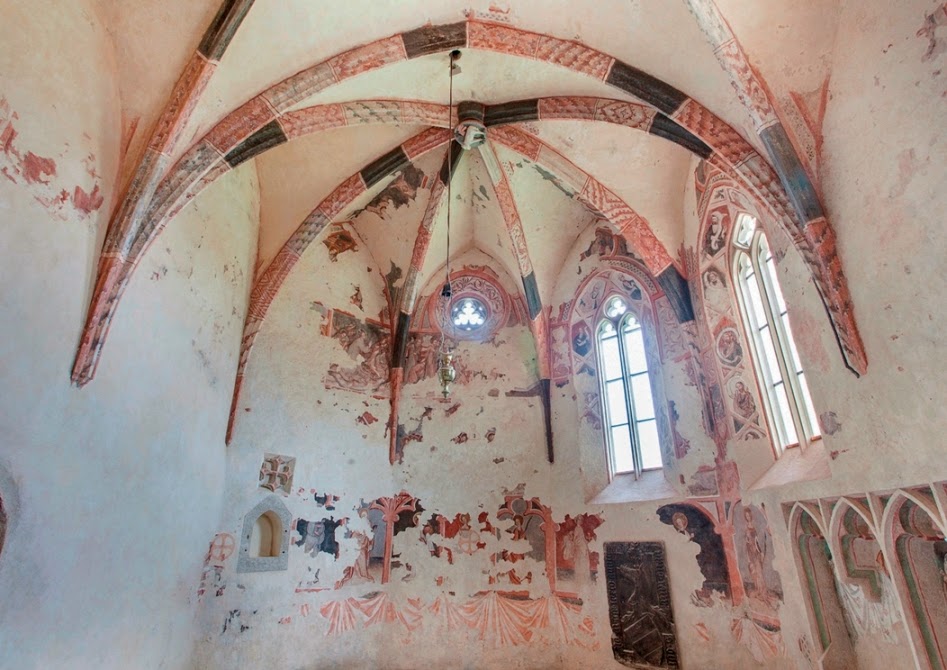 |
| View of the restored sanctuary (2014, photo: Peter Gombo?) |
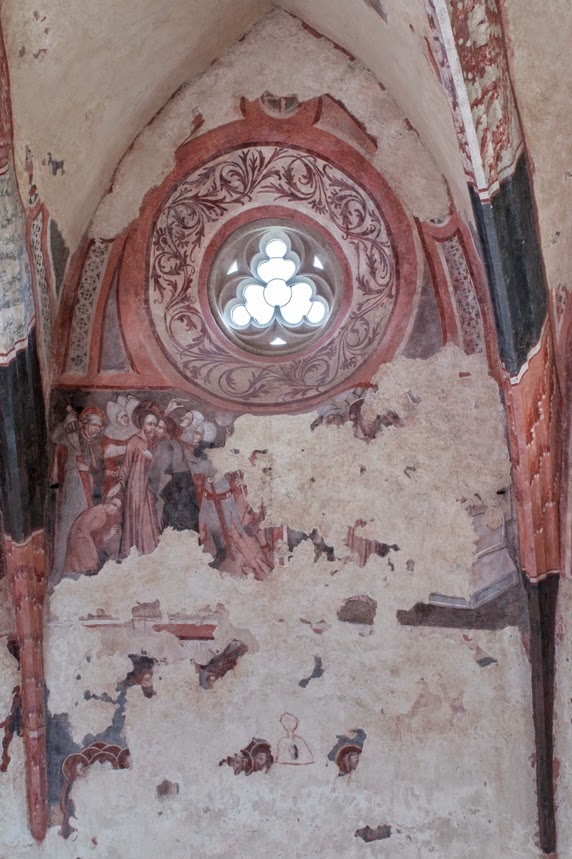 |
| Eastern wall of the sanctuary (restored state, 2014, photo: Peter Gombo?) |
- Medieval Frescoes At Bögöz Restored
One of my favourite medieval churches is at Bögöz (Mugeni, RO), in Transylvania. The north wall of this church is covered with a rich ensemble of 14th century mural paintings, which were discovered in 1898. Fur much of the last 100 years, these frescoes...
- Late 14th Century Frescoes Discovered At Nitra Cathedral
The cathedral of Nyitra (Nitra, Slovakia) is one of the oldest, most complex, and - until quite recently - least known cathedral building of medieval Hungary. Located north-east of Pozsony/Pressburg/Bratislava, the bishopric of Nyitra was founded before...
- Medieval Wall Paintings Discovered At Magyarlóna
Cover of the book on Magyarlóna The village of Magyarlóna (formerly known as Szászlóna, now Luna de Sus, Romania) is a characteristic village of the Kalotaszeg region of Transylvania, near Kolozsvár (Cluj). The village was first mentioned...
- Virtual Visits To Transylvanian Medieval Churches
Gelence (Ghelinta) A new website provides a number of very-well done virtual visits (360° panoramas) to Transylvanian sites. The site, called Treasures of Szeklerland introduces monuments and sites from the eastern part of Transylvania, the territory...
- The Medieval Parish Church Of Pest (part Ii.) - A Remarkable Discovery
This post focuses on the medieval fresco decoration of the Inner City parish church of Pest - you can read my introduction to the history of the building here. Not much survived of the original painted decoration of the Inner City parish church....
